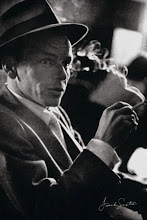I became interested in branding as it applies to actors after I had founded my repertory company for film and television. My motivation was two-fold: to develop actors who would be more interesting to the public as well as mainstream Hollywood and to make the films our group made with them more salable--our goal was to build a following for each of them. Over the twenty-plus years that the rep company was in operation, I delved more and more into the psychology and nuance of branding and this influenced the development of my Action/ReAction technique, which has as a goal to train actors to play lead roles.
The most frequent question I am asked by those wishing to better understand the seemingly divergent demands of branding and the artistic expression of the actor is: What Is Meryl Streep's brand? I wish I had a dollar for every time I've been asked this question but it is understandable why it is asked. On the face of it, Meryl Streep seems to be all over the map with her performances (in the best possible ways) which would seem to belie the imperative to have a well-defined brand. However, let's take a closer look.
Meryl Streep's brand is that of an intelligent and emotionally vulnerable woman which is most effective when she adds a foreign national identity--French in The French Lieutenant's Woman, Polish in Sophie's Choice , Danish in Out of Africa, Italian in The Bridges of Madison County and Irish in Dancing at Lughnasa. She played this brand for Woody Allen in Manhattan but without the foreign identity. These are the roles that made her legacy and not films like She-Devil where the brand was absent.
Sometimes, having an established brand helps an actor play against it like Tom Hanks where his trustworthy, everyman image made the face of AIDS more accessible to audiences in Philadelphia. Apollo 13 and The Da Vinci Code both took full advantage of his established brand. Julie Andrews' brand of innate, optimistic enthusiasm is another example where the absence of her usual enthusiasm in The Americanization of Emily made its own point.
You'll notice that Clint Eastwood has had a consistent brand since the late 60s and Steve McQueen was consistent except when he went off it in a film, An Enemy of the People, that was unsaleable and could not find an audience. The Hollywood studios understood this and even had a clause in Clark Gable's contract when they loaned him to other studios that they couldn't mess with his brand. In the same fashion, Kate Hepburn, Cary Grant, Bette Davis, John Wayne, Humphrey Bogart and the other greats of cinema all had consistent and well-defined brands. They set a great example.
If an actor isn't concerned with the protection of his or her own brand, who else will be? It's the same as McDonalds or In-N-Out maintaining quality control on their franchises because, when all is said and done, acting is a business. Unless one acts solely as a hobby, branding is a crucial concept of which an actor needs to be aware.
From a strategic point of view, there are three types of actors in "Hollywood": The Bankable Lead (whose popularity attracts investors and audiences), The Antagonist (whose job is to upstage The Bankable Lead) and Everybody Else (whose job is to be competent without distracting from the interaction of The Bankable Lead and The Antagonist). The first two need to be branded. The last does not as they are interchangeable and disposable.
The two posters here are from Steve McQueen movies--Nevada Smith from 1966 and Tom Horn from 1980, indicating a good run of 14 years for Steve and his brand, until you realize that his brand first made our acquaintance in the television series Wanted: Dead or Alive, which began in 1958, making Steve a popular brand for 22 years. Not a bad run...


























































No comments:
Post a Comment